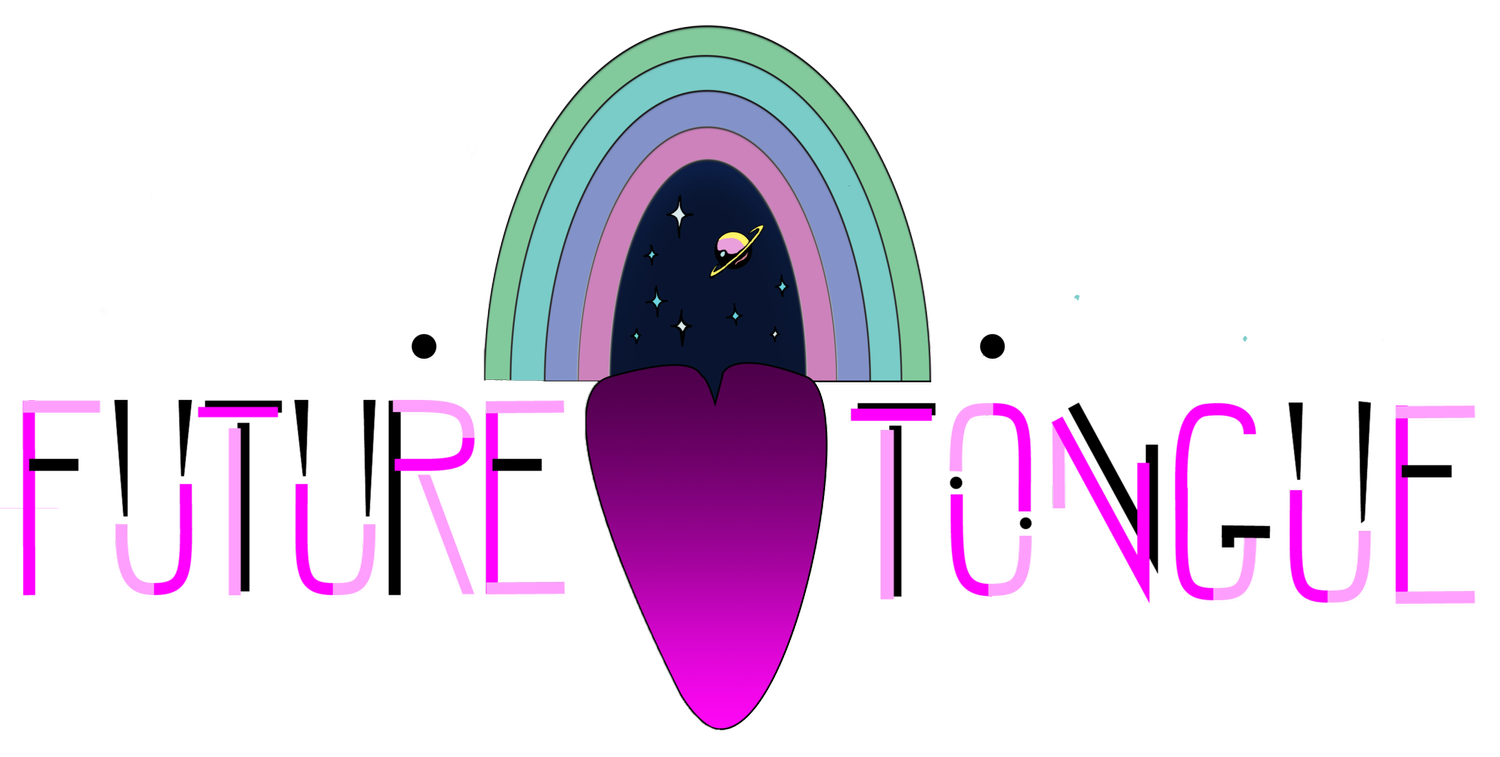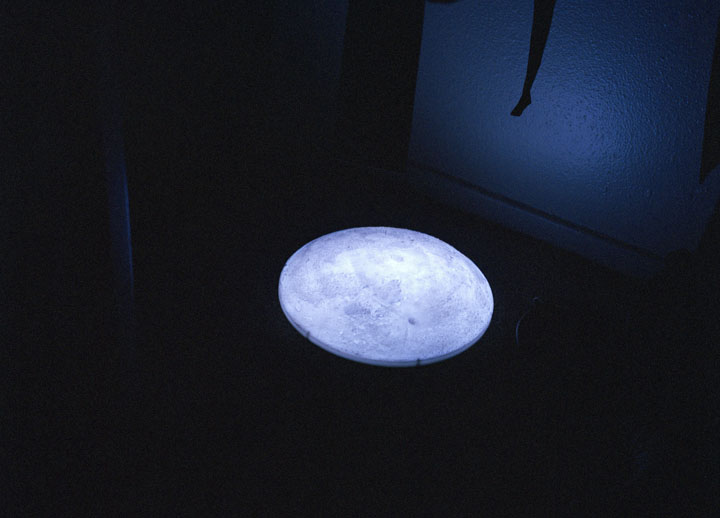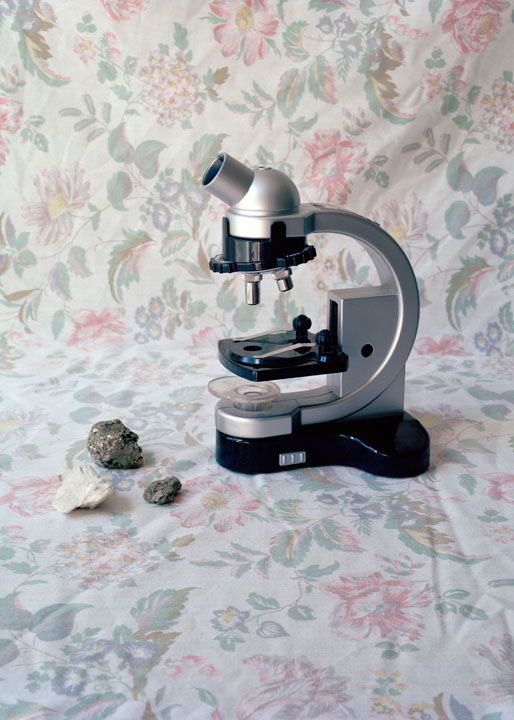REBECCA MARINO
AUSTIN, TEXAS
Rebecca Marino is a visual artist and curator in Austin, Texas. Her studio is a part of a larger warehouse and non-profit called Pump Project, which has a little over 30 studio spaces and about 40 artists. In addition to running their gallery, Rebecca spends her time questioning the concreteness of fact by blending science and otherworldly elements with beauty and fiction, challenging the preconceived notions that photography is proof. She uses photography, sculpture, and audio/visual installations to represent these ideas. We have crowned her with the title of ‘the anti-detective’ and sent director Jessica Burgess of Tal Vez Entertainment to investigate the peculiar spaces she has created.
Interview and Video by Jessica Burgess
Interview edited by Britt Harrison
Posted January 11, 2017
Just A Few Light Minutes Away
When I talk about my practice I often talk about rocks. They are these everyday things that we see, we kick around, we step on, but rocks essentially tell the history of the planet that we’re on better than any living creature can. They’re these really amazing things that have this history which we take for granted.
Our Stellar and Terrestrial Intersect
The astronomy class that I took in liberal arts school has been extremely impactful on my work. I took it at the same time as a landscape photography class, so I began to make these weird connections between the landscapes that I was shooting and the cosmic imagery that I was surrounding myself with. I was getting this really beautiful, naive perspective where I was seeing the Milky Way Galaxy in a scummy lake or craters off the highway in Texas instead of dried up ponds. I learned that my intuitive connections between those two things were real. We’re actually all made of stardust.
See It To Believe It
Our emphasis on documenting everything in this culture is funny to me because all my photographs are very constructed. Photography is a very manipulative medium. It’s not always honest. Everything you do is a decision. There are so many people that delineate between the photographer and an artist. It’s an equally creative and manipulative medium. For me, it’s really similar to painting -- depending on how you treat it.
I worked in commercial editorial photography for a while when I was first starting. Even with editorial stuff you often have to place people, or remove poles and you’re framing is very deliberate. Thinking about photography in that way really weirded me out. Even though you’re using the same skill set, commercial work uses a different part of your brain.
Believe It To See It
The Best Available Evidence series started as this way to poke fun at photography as a medium. People see photographs and automatically assume it’s evidence or proof of something. People want to believe in something so badly. There is a void that we’re constantly trying to fill. There are different levels of this need, some people fill it with a relationship or it can function on this higher level of power with God or aliens. To me, it’s how you get people like Jim Bakker, or Charles Manson, or David Koresh. I mean, people will find what they want in something if they want it badly enough.
What I’m trying to do is test the connotations of the viewer and to create those implications that there’s something happening in these environments that isn’t really there. I’m definitely trying to confuse and challenge people to provoke cynicism and suspension of disbelief.
Photographic Evidence
Inspiration
The whole series sort of started when I found this document called ‘The Best Available Evidence.’ It was a very legit collection of case studies, photographs, and diagrams about the existence of UFOs. I immediately went to see the photographs in this document, and that’s when it clicked. This would be a perfect subject matter to re-contextualize images to connect things that are mundane with these remarkable ideas.
Quite a bit of substantial content has been put together to prove the existence of UFOs or aliens. There was a government agency called Project Blue Book that was dedicated to the investigation of unidentified flying objects. There are government archives online that are hilarious. They’re microfilms, so you almost can’t even read them and they’ve been redacted and Xeroxed 10 times. Seeing how those historic documents degrade over time is fascinating in that they still act as proof. The series escalated into this tug of war between cynicism and belief.
Rebecca Marino pulled together 12 eye witness testimonies explaining their experiences with the unknown in this eerie sound installation. This installation was apart of our recent show Extraction in 2016.
Keeping the Absurd Close
I like to keep my work pretty playful, for my sanity, but also because it’s a point of accessibility for people. I think it’s really easy for viewers to get caught up in this deeper meaning because of the abstract nature of contemporary art. So to have an access point of something like aliens or food keeps it lighthearted, which is important to me.
Daylight Disc (CE-I)









